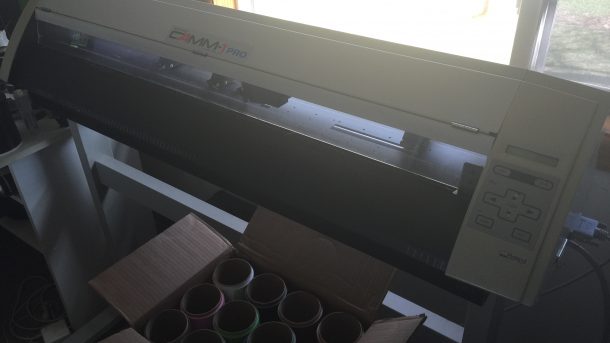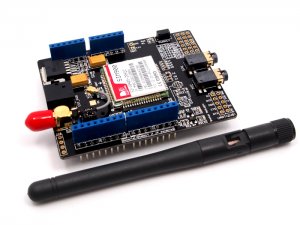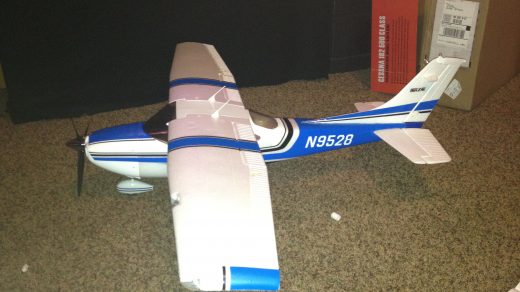While at a Ham Radio / Hobby Electronics show in Buffalo, MN, we saw a vendor there with a 24″ vinyl cutter doing custom signage for ham radio operators. We thought this could be a worthy investment to bring in some money while we display and discuss our multi rotors and other small electronics / arduino products.
We were lucky enough to find an old Roland PNC-1410 (serial/parallel) vinyl cutter with a 36″ cutting area on craigslist for better than a decent price so we scooped it up!
Now keep in mind we knew NOTHING about vinyl cutting so we had to do a little research and soon discovered that the latest version of any OS that supports the drivers for this cutter were Windows XP. Considering our shop is almost predominately Mac, this was going to be an issue. We performed an exhaustive search on Google to see if anyone had been able to run one of these using a MacBook Pro (or any Mac for that matter) and were very discouraged by what we found. Turns out, the general consensus was that this was not an option.
Luckily, we are a bit more resourceful than most and don’t give up so easily. What follows are detailed instructions on how to get up and running with an older Roland Cutter and a MacBook Pro.
First, we knew we needed Windows XP so we installed Parallels Desktop on the MacBook, bought a copy of XP and installed it as a guest virtual machine.
Next we knew we were going to have to figure out a way to connect the serial or parallel port of the cutter to the MacBook so first we purchased an
ExpressCard serial port adapter … FAIL! Apparently, Parallels Desktop will only allow the guest VM to access USB ports so we shipped that back to Amazon and purchased an Insignia™ – 1.3′ USB-to-RS-232 (DB9) PDA/Serial Adapter Cable – Black from BestBuy.
We installed the driver for Mac OS X (we are running 10.10.4 btw) from Insignia’s website, after this the cable showed up as a serial network adapter and we made it available to the XP VM via Parallels Desktop.
Next we purchased Roland’s CutStudio Software and installed that in XP.
Then we went to Roland product support page for our cutter (had to enter Serial Number) and downloaded the win2k/xp driver bundle into XP. We unzipped this and ran the setup and selected our model the 1410 and installed the driver.
Next in the XP control panel we added a printer on the com port for the USB to Serial cable and selected Roland PNC-1410 from the previous installed drivers (it shows up as a printer). Set this as the default printer.
Last just to make things seem a little more native, we turn on coherence for XP in Parallels Desktop so we could just work with the CutStudio window and not the entire VM when cutting.
After this we opened CutStudios created some text and tried to cut … SUCCESS!
Our basic workflow now is to create the vector art in Adobe Illustrator, save as an Illustrator EPS file (save as Illustrator 8, or CutStudio won’t recognize the format), open CutStudios and import the saved file and send to the cutter!
We hope this helps some of you out there or at least gives you a starting point to get your cutter working with a Mac!






